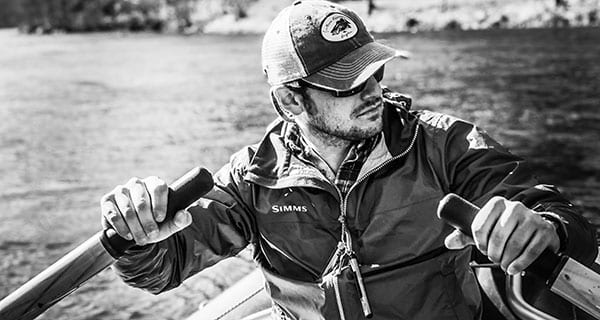I’ve found, in my experience, that people make fly fishing for trout way more difficult than it has to be. People get so caught up on tackle/ fly selection that they forget about understanding trout behavior as a whole. This is an interesting science, in that I wouldn’t call it exact, but maybe “predictable.” I do think that learning and trying to conceptualize how trout behave in given environments is a much more worthwhile endeavor than spending time worrying about tackle selection. I’m going to try and break down some of the basic concepts of trout behavior that have helped me in my fishing and guiding career, and will hopefully translate into a greater appreciation of these critters for those who may have thought trout are just mindless creatures.
1. When it comes to understanding trout behavior: Assume the fish are smarter than you in every way possible. It actually makes sense, when you think about it. Wild trout spend their entire lives living within an aquatic ecosystem that is obviously different than what we, as humans, live in. They are masters of their environment, in which their entire existence is instinctually based. A trout, in a given run, will know exactly what a real nymph or adult fly looks like drifting down through a given current lane. If you ever find yourself getting skunked: 99% of the time it’s not the fish, it’s the anglers presentation. Trout are by no means a mindless creature (well, unless it’s a stocker).
2. With that being said: All trout are consistent. All trout will face upstream, and all trout will eat aquatic insects. Granted, there are slight variances between trout species in what particular part of a current lane or pocket fish will sit in, but all trout will follow this exact same pattern. They will also always look for the easiest possible holding position that still gives them good access to dissolved oxygen, food, and shelter from potential predators.
3. Presentation is more important than fly pattern: I’ve written on this before in a previous article, but your fly pattern is a minimal part of the overall equation compared to how your fly is fished in the water. Different flies are created to present with different sink rates, buoyancies, and profiles in the water. Each trout responds differently to certain flies presented differently as well.
4. While all trout behave the same, there are variances between individual fish. I’ve seen instances where certain fish out of a group, for one reason or another, do not eat in a consistent manner. I think this holds true especially for trophy size fish in the summertime, as I’ve seen the majority of those fish caught in the extreme morning, evening, and nighttime hours that I’ve fished for them. Natural selection in regards to individual fish intelligence is something that I think most people don’t consider either. There are some trout that are just, quite frankly, way too opportunistic to survive for very long periods in the wild.
These are just a few of the variations that I’ve seen in my fishing and guiding career. I hope that it does give y’all an insight into how changing your own perceptions of how you view these magnificent critters can help you appreciate their tenacity and willingness to survive.
Ethan Hollifield is a member of a conservation organization called 2% For Conservation and a guide for Southern Appalachian Anglers.
